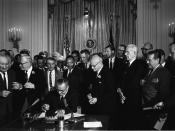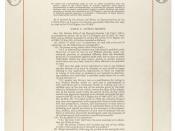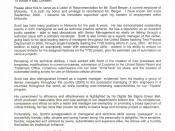Affinity Orientation Discrimination Case Studies
Imagine that you are a department manager and you find out that a man you work with has become a woman, or you find out a woman you work with enjoys the private company of woman, would these concepts cause you to discriminate against your employees in the workplace? Analysis of case studies, understanding applicable laws, and recommending clearly defined policies for the workplace will assist with understanding and preventing affinity orientation discrimination. It is important in today's workplace to have an intricate understanding of the difference between affinity orientation and the word sex as it pertains to Title VII of the Civil Rights Act of 1964 (Title VII).
The term sex referred to in Title VII represents the gender of an individual employee. Affinity orientation refers to the intimate relationship that an individual may have with another individual of the same gender, or an individual's desire to become the opposite gender, either temporarily or permanently.
There are various types of affinity orientation, none of which are protected by Title VII (Bennett-Alexander, 2001 p.243).
One example affinity orientation would be a woman who is a lesbian or a man who is gay. It is becoming increasingly popular for men and women to have a surgical procedure performed to become the opposite gender; this too is a form of affinity orientation. Affinity orientation has become a subject of adversity in the workforce as a result of there being little protection against discrimination for employees participating in the various types of affinity orientation. Case study analysis is a method that management can utilize to better understand affinity orientation in the workplace and preventing discrimination.
Case Study #1
Michael is employed at ABC Hospital as an operating nurse. Michael had taken a leave of absence from work to...


